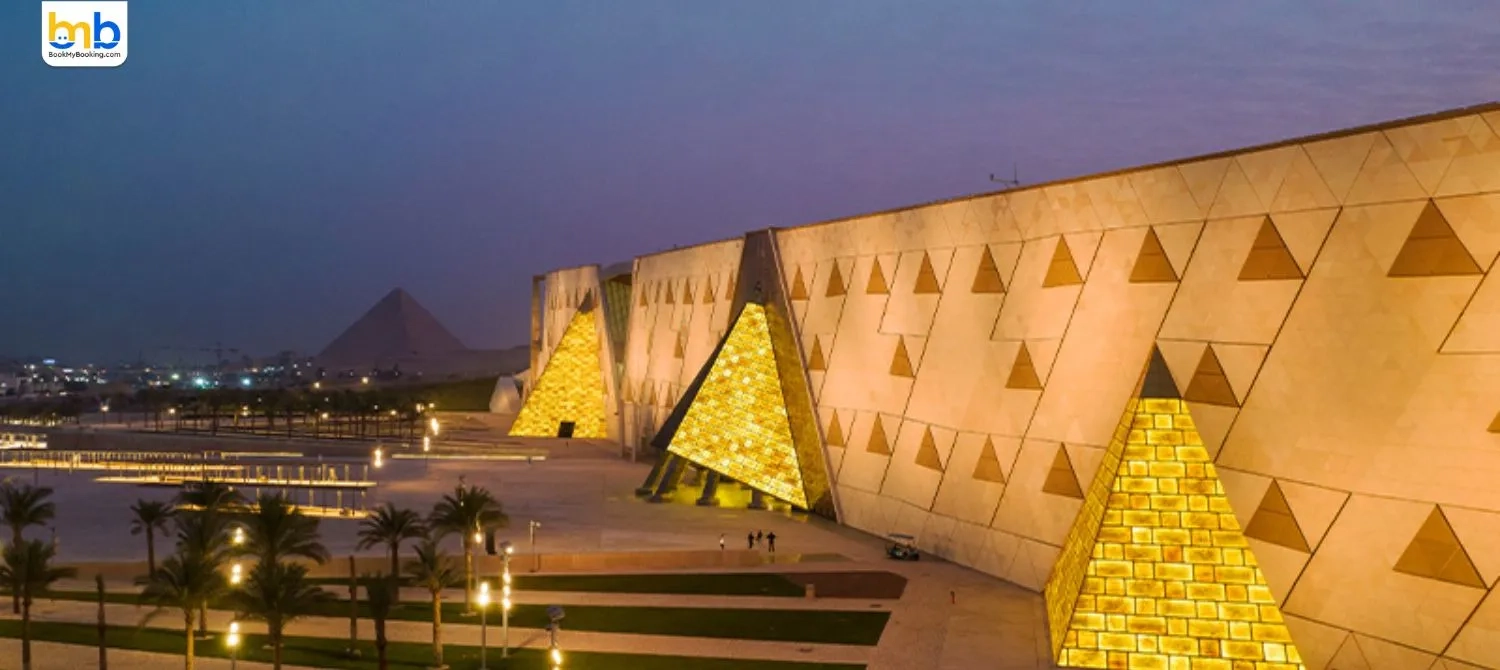After more than two decades of planning and construction, the Grand Egyptian Museum (GEM), a monumental cultural landmark located next to the pyramids of Giza, has officially opened to the public.
Key Highlights
- The museum spans roughly 50 hectares(about half-a-million square metres) and is regarded as the largest museum in the world devoted to a single civilisation.
- It houses a collection of over 100,000 artefacts, with around half now on display. Among them are treasures from the tomb of Tutankhamun, monumental statues including an 83-ton statue of Ramesses II, and rare pieces that span thousands of years of ancient Egyptian history.
- Positioned at the edge of the Giza Plateau, the museum is strategically placed not only as a cultural centre but as a major driver of Egypt’s tourism sector.
Why It Matters
The opening of the Grand Egyptian Museum is a landmark event for several reasons:
- Heritage consolidation: For the first time, many of Egypt’s iconic ancient treasures have been brought together in one purpose-built facility, allowing visitors to experience the legacy of ancient Egypt in a comprehensive way.
- Tourism strategy: Egypt is using the museum as a key piece in its plan to boost visitor numbers, extend stays, and deepen the engagement of tourists with its civilisation-heritage offerings.
- Modern-meets-ancient: The museum combines state-of-the-art design, digital and immersive exhibition techniques, and conservation labs with the timeless appeal of one of the world’s oldest civilisations.
Looking Ahead
With the Grand Egyptian Museum now operational, several implications are worth noting:
- The surrounding region (Giza/Greater Cairo) is poised to see increased visitor flows, infrastructure upgrades, new hospitality offerings and associated economic activity.
- For travellers and tour operators, the museum opens a fresh anchor experience—those planning Egypt tours may now centre itineraries around the GEM, with extended stays and deeper explorations of ancient Egypt beyond the classical pyramid visits.
- From a cultural-preservation viewpoint, the museum offers improved facilities for artefact conservation, research and public education, potentially setting a new benchmark for large-scale heritage-museum projects worldwide.
The Grand Egyptian Museum’s opening signals a renewed era for Egypt’s presentation of its ancient past, one that is both globally ambitious and deeply rooted in national identity.


